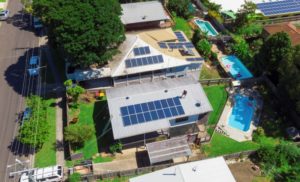
U.S. policymakers struggle to keep pace with surging solar markets.
Indefinite delays. Backlogged application systems. Accusations of unscrupulous developers “gaming the system.”
These are some of the pitfalls that U.S. policymakers hope to avoid when designing an effective program to encourage the use of solar energy. But as interest and investment in solar energy grows, regulators are struggling to design policies capable of taming aggressive developers and effectively channeling investment.
The U.S. solar industry has charted remarkable growth over the past decade, averaging an annual growth rate of 50 percent and increasing its share of the country’s total electric generation from 0.1 percent in 2010 to more than 2 percent today. With notable exceptions, however, the domestic solar industry still largely depends on state- or utility-sponsored incentive programs to compete economically with natural gas and legacy fossil fuel generators. And these solar programs have been plagued by design failures and delays, contributing to boom-bust cycles of development in incentive-driven markets.
A successful solar program requires policymakers to calibrate three complex sets of rules: program requirements, land use laws, and grid interconnection rules. Any misalignment between these sets of rules can lead to unintended consequences and costly, time-consuming readjustments.
The Xcel Energy community solar program in Minnesota provides one early example. There, regulators sought to limit program eligibility to projects one megawatt in size—about the size of a small farmer’s field. But canny developers skirted the size restriction by co-locating multiple projects, effectively constructing larger, more profitable utility-scale solar farms out of one-megawatt building blocks. Partway through the program, Minnesota was forced to impose a rule prohibiting co-location, prompting many developers to withdraw their applications and leading to a significant decrease of interest in the program.
Or take New York’s community solar program. Before 2017, statewide interconnection rules allowed developers to join the interconnection queue—the waitlist of generators in line to connect to the grid—without proving that they had acquired land use rights for their project site. Taking swift advantage of this workaround, developers submitted interconnection applications for hundreds of speculative projects in hopes of later securing the rights to the underlying land. Because applications were processed on a first-come, first-serve basis, these “fake” projects clogged up the queue and prevented viable projects from moving forward. Regulators were eventually forced to put the program on hold while they determined a way to weed out the nonviable projects.
Both Minnesota and New York were early movers in solar policy; some errors in a trial-and-error system of policy development might therefore be expected. Indeed, one advantage of a state-by-state policy approach—in theory at least—is that policymakers can learn from the successes and failures of previous programs. There is some evidence that inter-state learning has occurred. After Xcel’s co-location debacle, for example, policymakers designing Illinois’s Adjustable Block incentive program were careful to include clear rules governing co-location.
But avoiding the mistakes of the past may be trickier than it sounds, as the turbulent launch of the Adjustable Block program itself suggests.
Like the existing program in New York, the Illinois incentive program uses a “declining block” structure. Under this approach, developers apply for limited blocks of program capacity. Incentive rates decline progressively as the blocks fill up.
As policymakers in Illinois noted, however, previous declining block programs have often struggled to cope with initial demand. Because the most profitable incentive rates are first-come, first-serve, developers in the past have rushed to submit applications within seconds of a program’s launch, crashing government servers and leading to accusations of unfairness. To avoid a mad rush, Illinois regulators chose instead to allocate the first round of block capacity using a lottery mechanism.
So where did things go wrong? To start, the Illinois community solar program met with an overwhelming—and largely unanticipated—volume of interest. In the months leading up to the program’s launch date, developers flooded state interconnection queues with hundreds of prospective projects. By the time the application window closed, developers had submitted nearly two gigawatts of community solar project proposals—more than ten times the program’s total capacity.
Enter the lottery. In April 2019, Illinois awarded incentive contracts to a random selection of proposed projects. But the winning projects did not necessarily match up with the first projects in the interconnection queues.
Once again, because interconnection applications are processed sequentially, some viable projects—ones with incentive contracts—languished in the queues, unable to progress until higher-ranked projects moved forward. Meanwhile, developers with higher-ranked projects but no contract dragged their feet, hoping for a program extension. Just as in New York, regulators in Illinois found themselves facing an interconnection mess.
In hindsight, the conflict between the lottery mechanism and the interconnection queue process seems easy to spot. It appears, however, that policymakers in Illinois genuinely did not anticipate the magnitude of interest in the program. And by the time that interest became clear, regulators were effectively locked into using a lottery since the state’s public utility commission had already approved a preliminary plan that included the mechanism.
The Illinois example illustrates the challenge of designing functional solar policy in the face of a booming, aggressive development industry. Even with the lessons of the past at policymakers’ disposal, aligning program, land-use, and interconnection rules—and predicting how the market will respond to the complex web of regulation that results—remains a formidable challenge.



